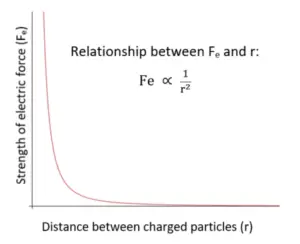No Contact Rule Vs Long Distance Relationship
No Contact Rule and Long Distance Relationships can both help in maintaining space and perspective in a relationship, but they address different circumstances. The No Contact Rule is typically used after a breakup to allow both parties to heal and move forward.
On the other hand, a long-distance relationship involves partners who are geographically separated but committed to maintaining their connection. Both approaches require effective communication, trust, and understanding to make the relationship work. Understanding the nuances of each approach can help individuals navigate their relationship challenges and make informed decisions about what is best for their unique situation.
We will explore the distinctions between the No Contact Rule and Long Distance Relationships and provide insights into when each may be beneficial. With over 50% of Internet users accessing the web through mobile devices, content appears on a wide range of screen sizes and platforms. In light of this, it is crucial for marketers and content creators to deliver a seamless user experience. When it comes to discussing relationship strategies like the No Contact Rule and Long Distance Relationships, it’s important to provide clear and concise information that resonates with the audience’s needs. With this in mind, let’s delve into the key differentiators and similarities between these two relationship dynamics and how they can impact individuals in their romantic journey.

Understanding No Contact Rule
The No Contact Rule can be challenging, especially in long-distance relationships. While the rule can help in healing after a breakup, it can also strain long-distance relationships. Communication and trust are key in navigating this delicate balance. Understanding the nuances of the no contact rule and long-distance relationships can support better decision-making in these situations.
Understanding No Contact Rule The no contact rule is a strategy used in relationship dynamics, particularly during a breakup, to create space and distance between individuals. It involves cutting off all forms of communication with an ex-partner for a specified period. This approach aims to allow both parties to heal, gain clarity, and potentially rediscover themselves. Understanding the dynamics and psychological impact of the no contact rule can provide insight into its effectiveness in various relationship scenarios. What is the no contact rule in a breakup? The no contact rule, often utilized after a breakup, entails refraining from any form of communication with a former partner. This includes avoiding phone calls, text messages, social media interactions, and any other means of contact. The premise is to give both individuals the opportunity to process their emotions, gain perspective, and potentially achieve closure. By creating this separation, individuals can focus on self-growth and potentially reevaluate their feelings for each other. The psychological impact of the no contact rule The no contact rule can trigger a range of psychological and emotional responses. For the individual implementing the rule, it can foster a sense of empowerment and control over their healing process. It allows them to prioritize self-care and emotional well-being without the interference of the former partner. On the other hand, the ex-partner may experience feelings of confusion, longing, or even realization during this period of absence. This separation can initiate introspection and possibly lead to a renewed appreciation for the relationship, or conversely, a realization of independence and self-sufficiency. How the no contact rule affects emotions Implementing the no contact rule can evoke various emotions for both parties involved. For the individual initiating the rule, it may entail initial feelings of sadness and longing. However, as time progresses, this strategy might contribute to a sense of liberation and self-discovery, leading to an improved self-esteem and emotional stability. Conversely, the ex-partner may experience a sense of longing, confusion, or even a newfound understanding of their emotions during this period of separation. This emotional journey, although challenging, can potentially lead to personal growth and clarity for both individuals involved.Pros And Cons Of Long Distance Relationship
When it comes to relationships, the decision to embark on a long-distance relationship (LDR) can be enticing yet daunting, with its own set of unique advantages and challenges. Understanding the pros and cons of a long-distance relationship can help individuals make informed decisions about pursuing or maintaining such relationships. Let’s delve into the various aspects of long-distance relationships and explore ways to navigate through the complexities that they entail.
Advantages Of Being In A Long Distance Relationship
One of the key advantages of being in a long-distance relationship is the opportunity for individual growth and independence. Being physically separated can encourage both partners to strengthen their identities, pursue personal interests, and focus on self-improvement without the constant presence of their significant other. Furthermore, long-distance relationships often require heightened levels of communication, which can lead to stronger emotional connections and a deeper understanding of one another.
Disadvantages Of Being In A Long Distance Relationship
However, long-distance relationships come with inherent challenges. The absence of physical presence can lead to feelings of loneliness, longing, and a lack of intimacy. Moreover, the inability to engage in shared activities and experiences can impact the overall quality of the relationship, potentially leading to feelings of disconnectedness and frustration.
Ways To Make A Long Distance Relationship Work
Despite the obstacles, there are effective strategies for making long-distance relationships work. Prioritizing communication by leveraging various mediums such as video calls, text messages, and handwritten letters can help bridge the emotional gap. Additionally, setting mutual goals and establishing plans for regular visits or reunions can provide a sense of hope and anticipation, sustaining the relationship through the distances.
Implementing No Contact Rule In Long Distance Relationship
If you find yourself in a long distance relationship, you may be facing the challenge of maintaining a healthy and stable connection with your partner while being physically distant. Implementing the no contact rule in this context introduces unique challenges and considerations that can significantly impact the dynamics of your relationship. Let’s explore the intricacies of applying the no contact rule in a long distance relationship, addressing the obstacles, setting boundaries and expectations, and effective communication strategies during the no contact period.
Challenges Of Applying The No Contact Rule In A Long Distance Relationship
When it comes to implementing the no contact rule in a long distance relationship, several challenges may arise. The physical distance already creates a sense of separation, and adding a deliberate period of no contact can intensify feelings of loneliness and uncertainty. Additionally, the lack of physical presence can make it more challenging to gauge the impact of the no contact rule and its effects on both partners.
Setting Boundaries And Expectations
In a long distance relationship, establishing clear boundaries and realistic expectations is crucial when implementing the no contact rule. Both partners should openly communicate and agree on the duration of the no contact period, the purpose behind it, and the terms of communication during this time. Setting boundaries helps create a sense of security and understanding, preventing misunderstandings and unnecessary strain on the relationship.
Communication Strategies During The No Contact Period
During the no contact period, effective communication strategies play a vital role in maintaining connection and understanding between partners. Utilizing alternative methods of communication, such as video calls, text messages, and handwritten letters, can help fulfill the emotional need for closeness and intimacy. Establishing a communication schedule can also provide a sense of structure and anticipation, alleviating some of the uncertainty that may arise during the no contact period.
Maintaining Emotional Connection
When it comes to maintaining emotional connection in a long distance relationship, the challenges can be daunting. Whether you’re practicing the no contact rule or navigating the complexities of a long-distance relationship, maintaining a strong emotional connection is crucial. Both scenarios demand a high level of trust, effective communication, and the ability to overcome the emotional challenges of distance. Let’s explore some effective strategies to keep the emotional flame burning despite physical separation.
Ways To Stay Emotionally Connected In A Long Distance Relationship
- Regular video calls to maintain face-to-face interaction.
- Sending thoughtful and personalized gifts or letters to show appreciation and love.
- Setting mutual goals and planning future visits to have something to look forward to.
- Sharing daily experiences and seeking each other’s advice to stay involved in each other’s lives.
The Importance Of Trust And Communication
Trust and communication are the cornerstones of any successful relationship, especially in long distance arrangements. Building trust requires open and honest communication about feelings, fears, and aspirations. It’s essential to openly address insecurities and concerns. Consistent and transparent communication, whether through texts, calls, or video chats, fosters a deeper connection and ensures that both partners feel heard and understood.
Overcoming The Emotional Challenges Of Distance
Distance can present emotional challenges such as loneliness, insecurity, and fear of drifting apart. To overcome these challenges, it’s imperative to nurture the relationship by finding creative ways to stay connected. Developing routines for communication, scheduling regular virtual dates, and expressing affection through words and actions can mitigate the impact of physical separation. It’s essential to acknowledge the emotions that distance brings and reassure each other of the commitment to the relationship.
Reconciliation And Moving Forward
After the completion of the no contact period, couples may find themselves at a crossroads with the decision to reconcile or move on in a long-distance relationship. It’s essential to carefully consider the future of the relationship and how to rebuild a stronger and more resilient foundation for the journey ahead.
Reconciliation After The No Contact Period
Reconnecting after the no contact period can be a critical and delicate phase for couples. It’s crucial to approach this with open communication and a genuine desire to understand and address the issues that led to the decision for space. Reaffirming commitment to the relationship and acknowledging the growth and changes during the separation is vital in navigating the reconciliation process.
Decision-making For The Future Of The Relationship
Deciding whether to continue a long-distance relationship or pursue other paths requires careful consideration. Reflecting on the lessons learned during the no contact period and weighing the potential challenges of maintaining a long-distance relationship against the value of the partnership is necessary for informed decision-making.
Building A Stronger Foundation For The Relationship Post No Contact Period
As the couple moves forward, focusing on establishing a strong foundation is paramount. This may involve redefining boundaries and modes of communication, making plans, and setting mutual goals. Open dialogue, trust, and understanding are essential in laying the groundwork for a resilient and enduring relationship beyond the no contact period.
Is Maintaining No Contact Rule Important in Long Distance Relationships?
Maintaining the no contact rule can be crucial in long distance relationships. It helps in setting boundaries and respecting the partner’s need for space. However, it’s essential to discuss and establish consent in long distance relationships regarding the frequency and nature of communication to ensure both partners are comfortable.
Frequently Asked Questions For No Contact Rule Vs Long Distance Relationship
Is The No Contact Rule Effective In Long-distance Relationships?
Yes. The no contact rule can help create independence and strengthen trust in long-distance relationships.
Can The No Contact Rule Be Detrimental To A Long-distance Relationship?
Yes. Overusing the no contact rule can lead to feelings of neglect and insecurity in long-distance relationships.
How Can The No Contact Rule Benefit A Long-distance Relationship?
The no contact rule can foster personal growth, maintain individuality and reduce codependency in long-distance relationships.
What Are Some Alternatives To The No Contact Rule In Long-distance Relationships?
Regular communication, setting boundaries, and planning visits are effective alternatives to the no contact rule in long-distance relationships.
How Often Should The No Contact Rule Be Utilized In A Long-distance Relationship?
The no contact rule should be used sparingly and strategically to address specific issues in a long-distance relationship.
Can The No Contact Rule Strengthen A Long-distance Relationship?
Yes. When used thoughtfully, the no contact rule can create anticipation and appreciation, ultimately strengthening a long-distance relationship.
Conclusion
After evaluating the pros and cons, it’s clear that both the no contact rule and long-distance relationships have their challenges. However, each approach has the potential to strengthen a relationship when utilized effectively. Ultimately, open communication and mutual understanding are essential for maintaining a healthy and thriving connection, regardless of the distance.






